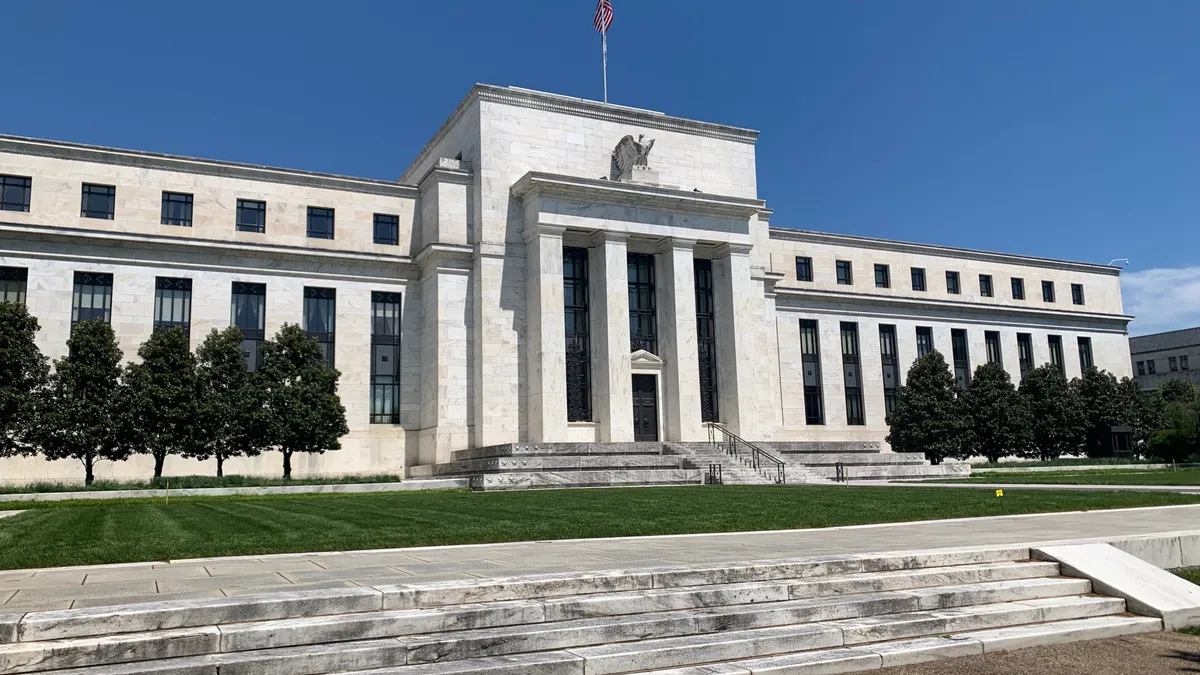Dive Brief:
-
U.S. companies and banks have not moved fast enough in starting the switch from the London Interbank Offered Rate (LIBOR) to a new reference rate, the Financial Stability Board (FSB) said, warning of potential market turmoil with the approach of LIBOR’s scheduled end on Dec. 31.
-
“The business loan market has been especially slow to begin transition” from LIBOR to a new benchmark rate, according to the FSB, a monitoring body that includes the Group of 20 nations and European Commission.
-
“Most banks are continuing to offer LIBOR as the primary or only floating-rate business loan option,” the FSB said, adding that “borrowers report that lenders have provided them with limited information about LIBOR alternatives.”
Dive Insight:
The Federal Reserve and U.S. Treasury have warned of potential market turmoil if corporate borrowers and financial institutions fail to transition from LIBOR to an alternative reference rate before its scheduled phase-out at the end of this year. LIBOR is the reference rate for trillions of dollars in mortgages, derivatives, business loans and other financial contracts worldwide.
The regulators have endorsed the Secured Overnight Financing Rate (SOFR) as the substitute for LIBOR, which is derived from London banks' estimates of what they would be charged when borrowing from other banks. SOFR is based on overnight repurchase agreements secured by Treasuries.
The use of SOFR has overtaken LIBOR in issuance of floating rate notes, and the adjustable rate mortgage market “is rapidly moving” to the new benchmark, the FSB said.
SOFR is catching on in derivatives markets — with more than $6 trillion in open interest in SOFR-based derivatives — but is still far from eclipsing LIBOR. Also, U.S. securitization issuance and business loans are still largely tied to LIBOR, the FSB said, warning of the hazards from slow SOFR adoption.
“Given the extent of risks associated with a failure to prepare adequately for LIBOR transition, the onus is now on firms to act,” the FSB said on July 6. “There should be no remaining doubts as to the urgency of the need to transition away from LIBOR by the end of 2021.”
For more than three decades financial institutions and corporate treasurers have woven LIBOR into a full range of contracts. Such widespread, time-tested use — along with mixed acceptance of SOFR and competition from other reference rates — has complicated efforts to ensure smooth adoption of a new benchmark.
Regulators began considering phasing out LIBOR after a manipulation scandal in 2012. Despite that blemish to LIBOR, financial institutions and corporate treasurers have delayed switching to SOFR because it lacks some of LIBOR’s appealing traits.
The LIBOR rate, as an estimate of borrowing costs among banks, reflects credit risks and can be forecast three, six and 12 months into the future.
Based on transactions in the Treasury repurchase market, SOFR neither reflects credit risk nor facilitates the creation of a term structure enabling corporate treasurers and financial institutions to make forward-looking rate calculations.
The Fed has told banks not to use LIBOR in financial contracts after the Dec. 31 deadline even though SOFR has yet to emerge as the dominant alternative rate in debt markets. The final fixings for most LIBOR rates — including one-week and two-month U.S. dollar LIBOR — will be made on Dec. 31, 2021, but other U.S. dollar tenors may continue until June 30, 2023.
Market stability hinges on phasing out LIBOR without delay, the FSB said. “Continued reliance of global financial markets on LIBOR poses clear risks to global financial stability.”












